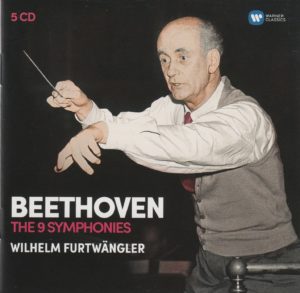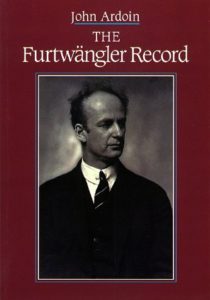
My office this morning is inside (because it’s only 43 degrees) looking out. Our cat’s new “cat tower” nearly fills the screen.
He loves the middle rung because it gives him a way to look down on the balcony and all the creatures that visit from time to time.
 While I figure out what to do with the likes of this little fellow, I am listening to German conductor Wilhelm Furtwangler, the Stockholm Philharmonic Orchestra (now known as the Royal Stockholm Philharmonic Orchestra), and Beethoven’s Symphony No. 6 in F major.
While I figure out what to do with the likes of this little fellow, I am listening to German conductor Wilhelm Furtwangler, the Stockholm Philharmonic Orchestra (now known as the Royal Stockholm Philharmonic Orchestra), and Beethoven’s Symphony No. 6 in F major.
This is the first time I have ever heard the Stockholm Philharmonic Orchestra.
So I’m curious about today’s experience.
I want to know what the Stockholm Philharmonic Orchestra sounds like under Furtwangler’s leadership.
To date, I’ve encountered Maestro Furtwangler five times in my Beethoven project, on…
 Day 7. Rating: Almost “Huzzah!”
Day 7. Rating: Almost “Huzzah!”
Day 25. Rating: “Meh!”
Day 43. Rating: “Huzzah!”
Day 61. Rating: “Meh!”
Day 79. Rating: “Huzzah!”
Three “Huzzah!” and two “Meh!” ratings.
Not bad.
Let’s see what today brings.
 But first, this excerpt from John Ardoin’s exhaustive book The Furtwangler Record (page 132):
But first, this excerpt from John Ardoin’s exhaustive book The Furtwangler Record (page 132):
For Beethoven, loving nature was as natural a reflex as breathing, and it would continue to be an intrinsic part of the German spirit well into this century. Like Mahler and Bruckner after him, Beethoven was obsessed with the open air. Perhaps more than anything else, this set Beethoven apart from Mozart, whose letters rarely mention nature and who seemed to have been contented in smoke-fills rooms, playing billiards. But Beethoven had to get up and out. Rain or shine, he went for long walks through the woods around the small village of Heiligenstadt (where the Sixth was written), a familiar figure lost in thought and in awe of his surroundings.
Always on these walks, he took with him a small notebook to jot down verbal or musical ideas inspired by the day or the surroundings: “Sweet stillness of the woods, it is as if every tree in the country spoke to me. Holy, holy ecstasy…who can describe it? If all comes to naught, the country itself remains.”
It is in the spirit of deep reverence for nature that Beethoven composed his Sixth symphony.
But will Maestro Furtwangler give Beethoven’s spirit its due?
We’ll see.
 Beethoven wrote his symphonies in four parts (except for the Sixth, which is in five). The time breakdown of this particular one (Symphony No. 6 in F major), from this particular conductor (Furtwangler, at age 62) and this particular orchestra (the Stockholm Philharmonic Orchestra – now known as the Royal Stockholm Philharmonic Orchestra), at this particular time in history (November 13, 1948) on this particular record label (Warner Classics) is as follows:
Beethoven wrote his symphonies in four parts (except for the Sixth, which is in five). The time breakdown of this particular one (Symphony No. 6 in F major), from this particular conductor (Furtwangler, at age 62) and this particular orchestra (the Stockholm Philharmonic Orchestra – now known as the Royal Stockholm Philharmonic Orchestra), at this particular time in history (November 13, 1948) on this particular record label (Warner Classics) is as follows:
I. Allegro ma non troppo………………………………………..11:56
“Awakening of cheerful feelings upon arrival in the country”
II. Andante molto mosso………………………………………..13:27
“Scene by the brook”
III. Allegro…………………………………………………………………5:58
“Merry gathering of country folk”
IV. Allegro…………………………………………………………………..4:08
“Thunderstorm”
V. Allegretto……………………………………………………………..9:28
“Shepherd’s song: Happy and thankful feelings after the storm”
Total running time: 44:17
My Rating:
Recording quality: 3 (slight tape hiss, lacks top end, ambient noises, sounds flat and mono – both of which are not unexpected for the age of this recording)
Overall musicianship: 4 (competent, but somewhat restrained)
CD liner notes: 4 (essays on Furtwangler written in English, German, and French, however historical details missing or hard to find: Where was this recorded? When? What orchestra? That information is in small print on the back of the CD sleeves)
How does this make me feel: 3 (“Meh!”)
I really, really, really wanted to love this.
I could not.
So I really, really, really wanted to like it.
In the end, after several listenings, I believe I can manage that.
But as far as ratings go, this is definitely not a “Huzzah!” It may be above “Meh!” but not enough to warrant a rating higher than that.
Here’s the problem: The orchestra never really seems to take off, give its all to the performance. That, plus the recording truly sounds its age (70 years old). It’s flat and not recorded all that well.
So my first listen did not impress me. Not even my beloved Movement I hidden melody (10:08-10:21) could move me. Neither did Movement III. Even that didn’t seem sprightly enough.
So it’s not just the recording quality. It’s the lack of energy.
What I find fascination, though, is that Maestro Furtwangler was already 62 in 1948. He was old even then! Plus, this recording is 70 years old. That’s partly why it sounds like its from a movie soundtrack from back in the day. Recording then was not what it is today.
So even though this performance is worthy of hearing given its historicity, it’s not one I can recommend as a standard by which to measure others.
“Meh!”
